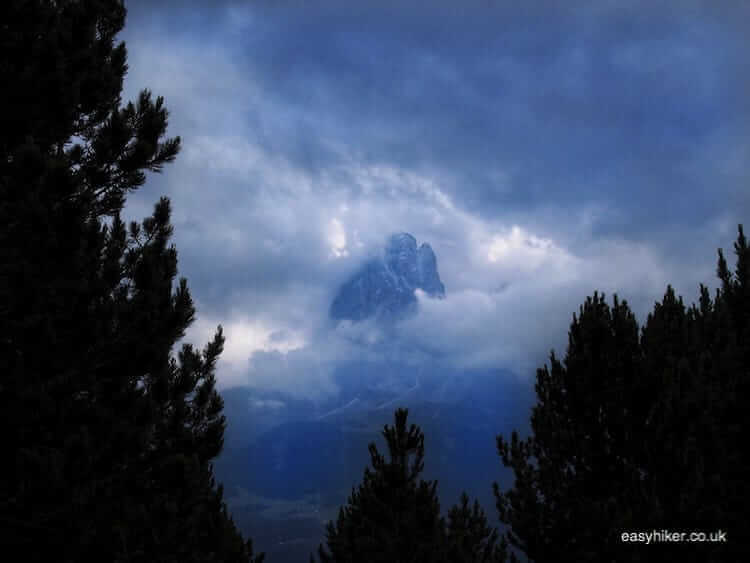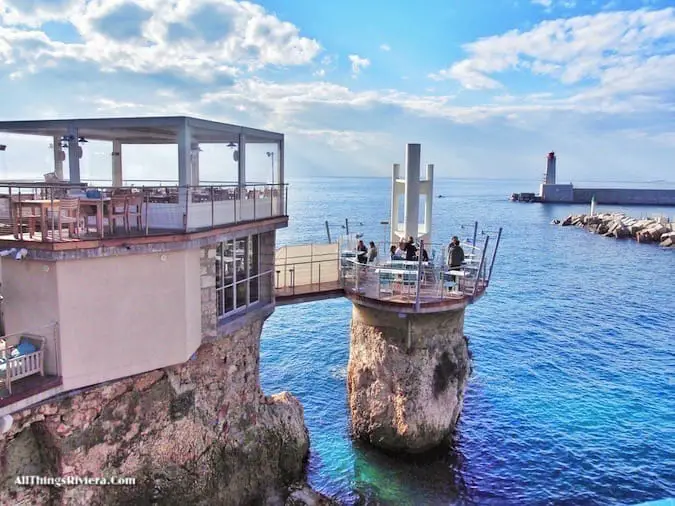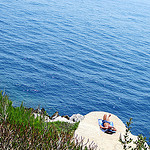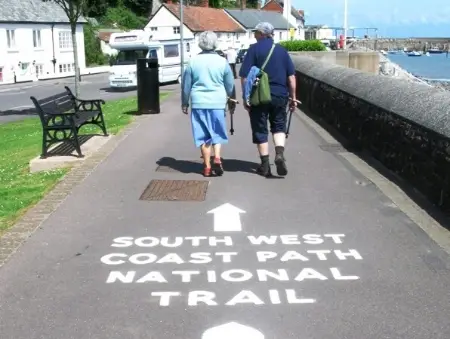Every season in the hiking calendar has its special rewards, but also its specific problems. On the northern Mediterranean rim, at around this time of the year, winter with its forbiddingly short days is coming to a close and the mimosas – those harbingers of spring – brighten up the hillsides with their sparkling yellows.
But at the same time, these days of early spring also increase the risk of rain. There is, in fact, no other time of the year when you are as likely to get thoroughly drenched.
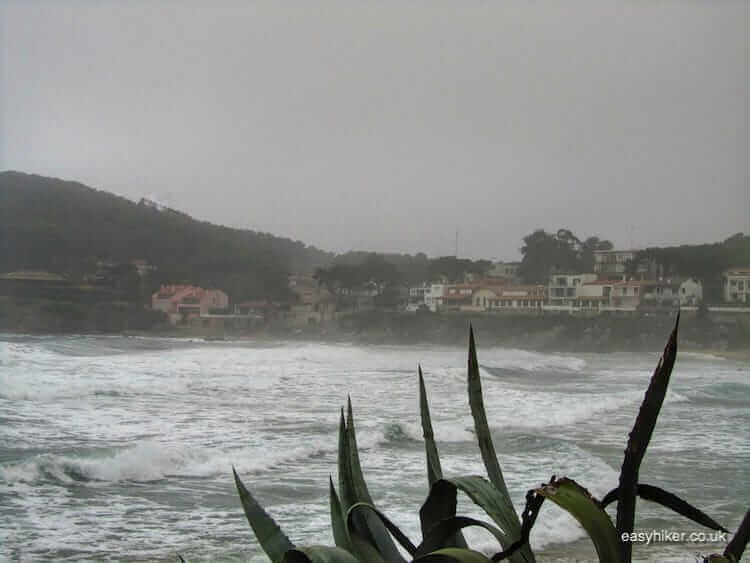
Rain, more than anything else that the weather gods can throw at us, is the perpetual enemy of the hiker: because it can come suddenly, without much of a warning, and because it can upset or even ruin the best laid-out plans.
So what do you do when you are out on a trail and suddenly – uh, oh – feel the first drop on your cheek, then another one, and before you know it, find you have been caught in the middle of an almighty Mediterranean tempest;
Sometimes you can – and should – soldier on, hoping for things and skies to brighten up, but fortitude and foolishness are close neighbours not only in the dictionary. When does the former change to the latter? When is it wise to call for a rain delay – or to call the hike off altogether?
How to proceed when the going gets wet
1. The best way of dealing with rain showers when the going gets wet is to avoid them altogether.
It goes without saying that you should pick the day with the best forecast: totally dry beats a prospect of light showers, bright beats overcast – all landscapes look more beautiful in the sunshine. Go for the sunniest day, even if the temperatures are a little high for your taste.
Don’t be date-specific when you are planning your hike. Work a non-specific hiking day into your holiday schedule and decide at the last instant – on the basis of a reliable, short-term forecast – which of the short-listed days it is going to be.
Do not be afraid of changing your plans the evening before or – in extremis – even on the morning itself.
As a rule of thumb: if it is too hot and dry on the trail, this may make your day a little uncomfortable, but if it is too wet, this always spells misery. Always. Without fail.
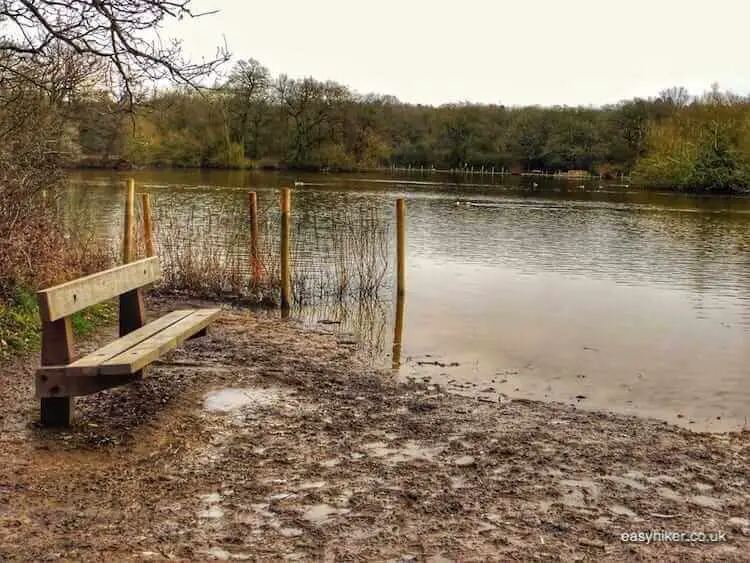
2. Soldier on to the end, be reluctant to call it off early on, but be more circumspect in the middle.
“I am in mud stepped in so far, that, should I wade no more, returning were as tedious as go over.” As Macbeth’s (sweetly named) First Murderer very nearly said.
In other words: somewhere beyond the half-way point of your hike, the balance starts to tilt in favour of completion.
Assess the situation like a baseball umpire: in the eighth inning, you will want to play on to the end. While, if the same amount of rain falls earlier in the game, the decision may go the other way.
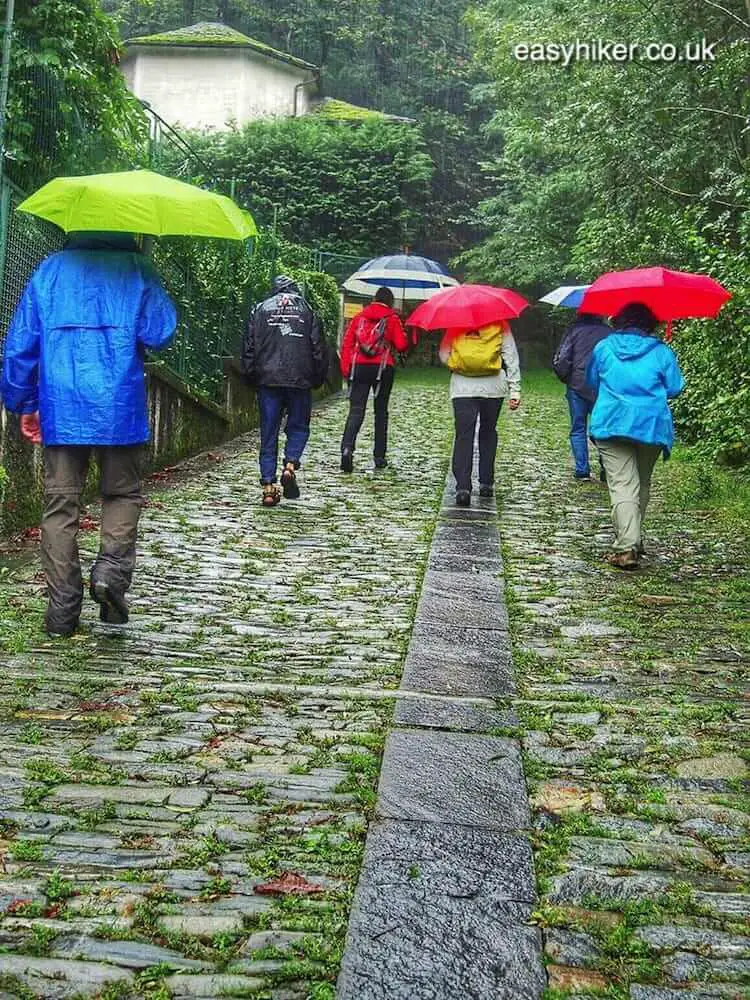
If rain surprises you early on in your hike, aim to continue to the point where you have at least completed “a stage“, so that you can finish the day in something other than total frustration.
You should, in the evening, be able to tell yourself: well, that did not go quite as planned, but at least, we were able to do some hiking.
You may not have reached he top of Mountain X, but you made it to the first high plateau and enjoyed some great views. A baseball ump will always try to avoid calling off a game before the end of the fifth inning – in hiking, reaching the end of the fourth or even the third can already count as a success.
3. Distinguish between drops, drizzle and downpour. Be clear in your mind which is which and how you intend to react to each.
In a downpour, everybody is running for shelter: that is the easy bit. Most hikers will also be able to agree on the right strategy for facing down the occasional raindrop: simply ignore.
The difficulties start when a light drizzle – which you will be trying to ignore as long as circumstances allow – turns into a consistent one.
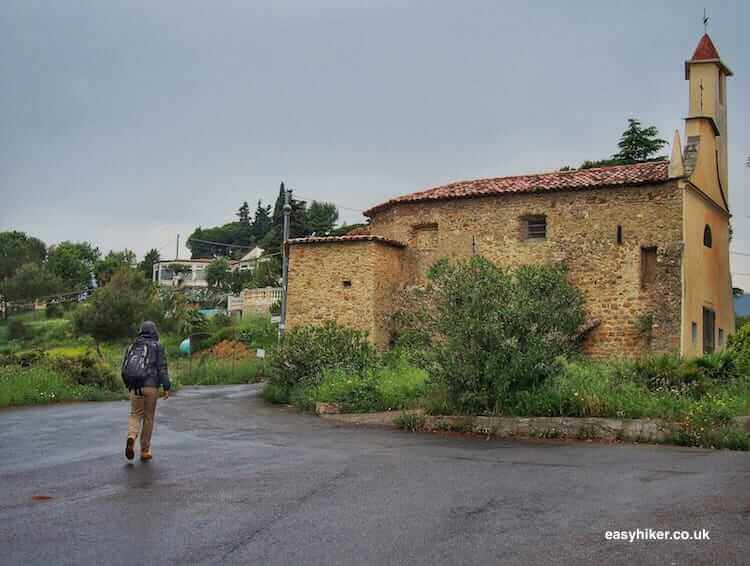
Many hikers underestimate the effects of such a consistent drizzle on their strength and powers of concentration.
When the going gets wet, one begins to overlook things including interesting details and features along the way (which make up much of the fun in a hike), because, after a while, all you will be thinking of is the rain, which will then become all you are able to see.
But you will also begin to overlook important things such as trail markers, an even bigger problem.
If you think that hiking in the rain is not much fun, try hiking in the rain when you have lost your way.
Want to experience the most miserable hike of your life? Then all you need to do is walk on, walk on, with (slowly fading) hope in your heart.
4. Have firm rules in place of when to call a rain delay …
All hikers have their own threshold of suffering, so feel free to make up your own rules. But some set of rules is mandatory: you got to have a plan of action other than waiting for the skies to clear up.
Here is what we do: if we have been caught in a downpour or have walked through consistent drizzle for 30 minutes, we seek a dry shelter and consider our options.
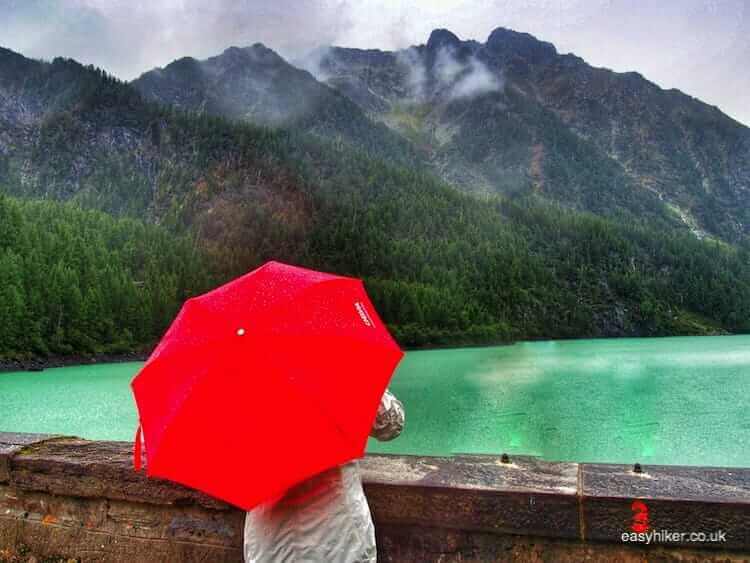
5. … and of when as well as how to end it.
When the going gets wet, set yourself a fixed time: 30 minutes, say. This is a long time to stand under a tree waiting for the rain to stop.
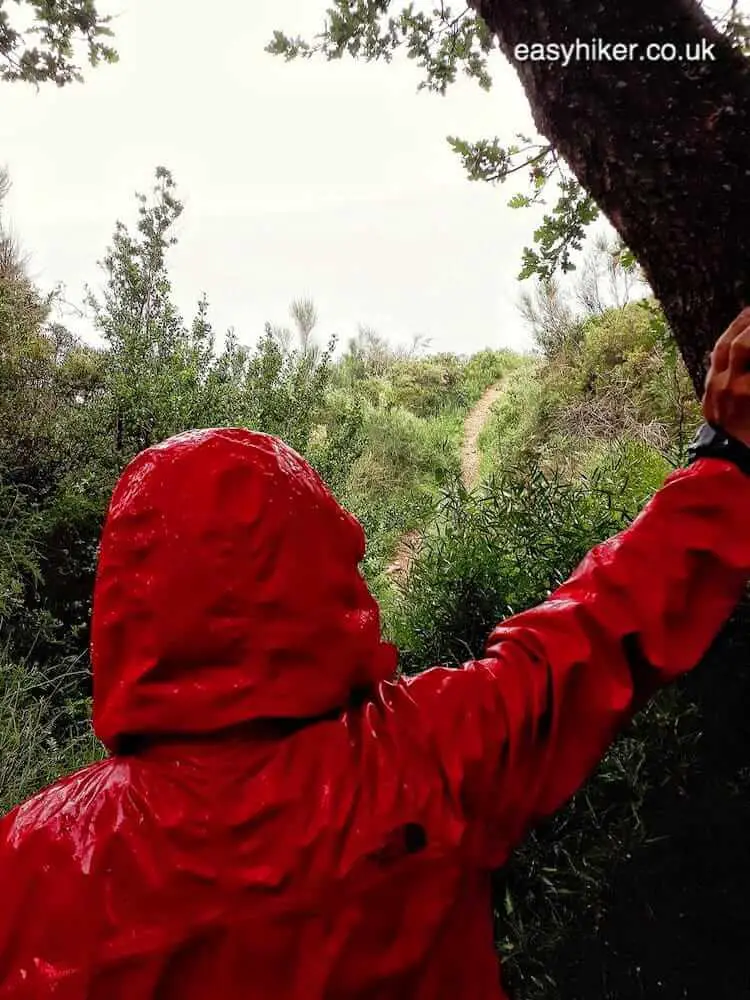
If the rain has not ceased and there is no indication that it will do so soon (if there is no patch of blue sky in the distance), call the whole thing off. Look at your map for a realistic way of cutting the trail short. Is there a road near-by with bus traffic? A train station? A countryside inn from where you can call a cab?
Be realistic in your assessment of the situation: you will not want to make your way to a road on the mere possibility that there may be a bus to take you back to civilization – neither do you want to arrive to find out that the next bus leaves one hour after sunset. This is the safest way of turning a slightly annoying experience into the mother of all day-trip catastrophes.
If there is no viable option of cutting short your trip: walk all the way back, if need be. At least you know what you will be finding on your arrival.
Once you have decided what to do, follow through with your plan. No shilly-shallying: just do it. Parallels with baseball games are all very nice, but there is one big difference: in baseball, no matter what, the clubhouse is always at hand. On a hike, you may still have to walk for an hour or more before you can dry out.
6. The weakest, most rain-averse member of the hiking party has the final say.
Sorry, tough daddies: I know it won’t be you, you are the ones who would soldier on when the going gets wet, through the wind and the rain, though your dreams be tossed and blown.
But on family outings, you never walk alone. You must not force your loved ones to do something which is against their better judgment and will. This is not the way to a successful outing or happy family memories.
I myself have learned this the hard way, but learned it I have. Take comfort in the simple thought that there will be another day. Not all plans work: this is not your fault but a product of the world’s imperfections, and there are always occasions where the best thing you can do is cut your losses.
